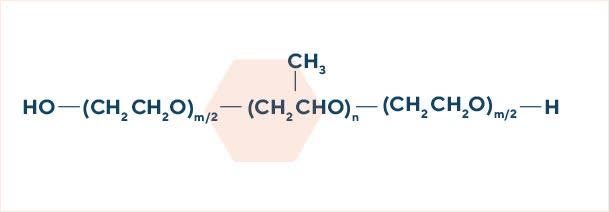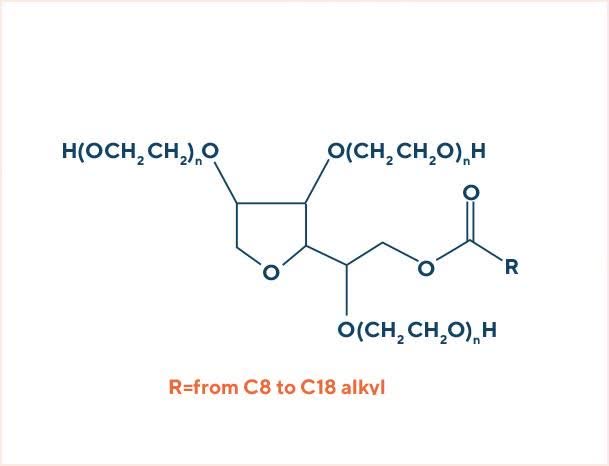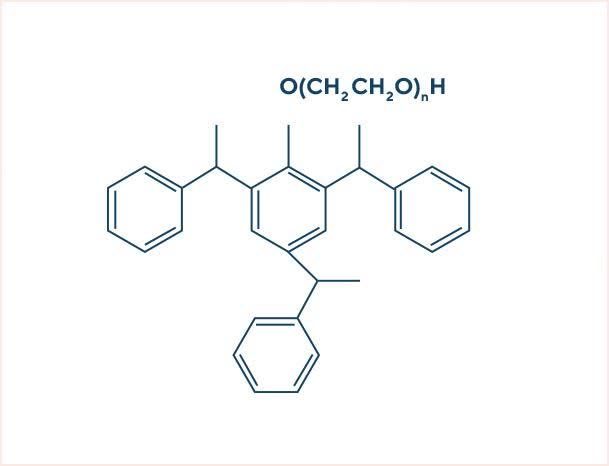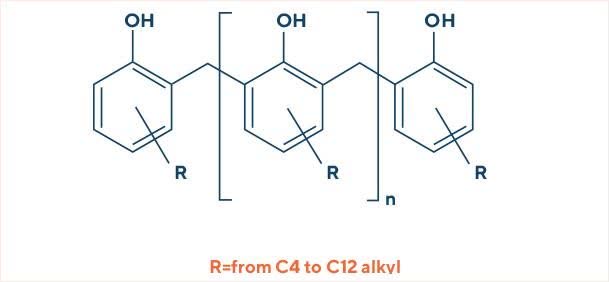Alkoxylates
Fatty Alcohol Alkoxylates

Chemistry: Our starting fatty alcohols could have linear or branched alkyl chains: for the linear chain we choose raw materials exclusively of renewable origin, whereas the branched chain is of petrochemical origin.
Ethylene oxide and propylene oxide could also be present in the same molecule: in this case we produce block derivatives, where ethylene oxide and propylene oxide are added in different steps, or random derivatives where ethylene oxide and propylene oxide are added in parallel.
Applications: The performance properties of the ethoxylated derivatives can be widely changed depending on the alkyl chain length and on the number of the ethylene oxides units linked to the alkyl chain.
According to their hydrophilic-lipophilic balance (link to nonionic surfactants) our fatty alcohol ethoxylates can be used in many different applicative sectors as water in oil and oil in water emulsifiers or wetting/cleansing agents.
Other important applications are as solubilizers (for the personal care sector) or rheology modifiers (for the vinyl chloride emulsion polymerization).
The presence of the polyoxypropylene chain and its location in the chemical structure can bring some additional properties. In particular it may lead to the decreasing of the foaming power (to obtain for example low foam detergents), to the decreasing of the pour point or to the improving of the emulsifying power.
Ethylene Oxide /PropyleneOxide Copolymers

Chemistry: In this particular family, the hydrophobic moiety of the surfactant is the polyoxypropylene chain. In our range we have both block and random copolymers with different ethylene oxide/propylene oxide ratios and different molecular weights.
In case of the block copolymers, we have both “standard” products (polyoxypropylene chain inside) and “reverse” product (polyoxyethylene chain inside)
Applications: Block copolymers could be used as antifoams in different industrial sectors (paper, textile, ceramic), as low foam wetting agents in agro and ceramic sectors, as demulsifiers in oil & gas sector.
Random copolymers are mainly applied as lubricants for example in the textile sector.
Glycerine Alkoxylates

Chemistry: We have developed both ethoxylated and etho/propoxylated glycerines; the ethopropoxylated derivatives are of block or random types and with different ethylene oxide/propylene oxide ratios and molecular weights. In some products we use the ethoxylated glycerines as intermediates for a subsequent esterification with fatty acids.
Applications: Our main applications are: as antifoams in different industrial sectors (paper, textile, ceramic), as low foam detergents for the Industrial and Institutional Cleaning sector, as demulsifiers in oil & gas sector.
Our fatty esters based on ethoxylated glycerines have good emollient and re-fatting properties and therefore find applications in personal care formulations.
Sorbitan Ester Ethoxylaters - Polysorbates

Chemistry: They derive from ethoxylation of our sorbitan esters. During reaction, the ester interchange takes place in the alkaline conditions of the ethoxylation. The net effect is that ethylene oxide inserts between the sorbitan ring and the fatty acid moiety. That makes the real chemical structure not as simple as the simplified formula reported
In our range we have both ethoxylated mono and triesters obtained starting from the respective sorbitan esters.
Applications: Our Sorbitan esters ethoxylates are well known as excellent o/w emulsifiers often in combination with their non ethoxylates counterpart. They find applications both in consumer products and in many different industrial sectors. Another widespread application is in the personal care formulations as solubilizers for low water soluble substances.
Some of our products comply with the requirements of European Pharmacopoeia 8.0 edition.
Castor Oil and Hydrogenated Castor Oil Ethoxylates

Chemistry: Castor oil and hydrogenated castor oil are the only natural triglycerides with a hydroxyl group on the fatty acid chain; therefore they can react with ethylene oxide. Ester interchange takes place in the alkaline conditions of the ethoxylation reaction, which leads to the insertion of a polyether chain into the glyceride linkage.
In our range we have several products with higher complexity, obtained through a modification of the standard chemical structure with a subsequent esterification step.
Applications: Depending of their hydrophilic-lipophilic balance, the main application of our derivatives is as water in oil or oil in water emulsifiers for many different sectors. Products with higher ethoxylation degrees could be used as solubilizers for low water soluble substances in personal care formulations.
Some of our products comply with the requirements of European Pharmacopoeia 8.0 edition.
Our products obtained with the subsequent esterification step have enhanced emulsifying power and could be used in particularly complex formulations in agriculture and oil & gas sectors.
Tristyrylphenol Alkoxylates

Chemistry The process starts with the synthesis of tristyrylphenol from phenol and styrene; in the subsequent step tristyrylphenol is reacted with ethylene oxide and/or propylene oxide.
We developed pure ethoxylated derivatives and both block and random ethylene oxide/propylene oxide derivatives.
The bulky hydrophobic group with four aromatic rings assure strong interaction with the dispersed phase of an emulsion/dispersion.
Applications: Our tristyrylphenol derivatives are well known as excellent emulsifiers in particular for the agrochemical formulations. They are also widely used as wetting agents for pigment dispersion in textile and paint & varnishes sectors.
Alkylphenol/Formaldehyde Resins Alkoxylates

Chemistry: We manage the synthesis of the alkylphenol/formaldehyde resins in both acid and alkaline catalyzed conditions. The resins have some aromatic hydroxyl groups than can react with ethylene oxide/propylene oxide.
Applications: The widespread application of our products is as demulsifiers in the oil & gas sector.
Fatty Acid Alkoxylates

Chemistry: Our starting natural fatty acid could be of both vegetable and animal origin. The alkoxylation process gives raise mainly to the ethoxylated monoester derivative with minor amount of the diester due to the ester interchange reaction that also take place in the alkaline conditions.
Applications: Our fatty acids ethoxylates are good emulsifiers for different applications and have an excellent eco-toxicological profile (no hazard label needed). In the applications where foam is unwanted, an important advantage over the corresponding fatty alcohol ethoxylates is the reduced foaming power. They are used in production of Emulsion Polyvinyl Chloride where their main function is as viscosity depressants in the final extrusion of the article.
Fatty Amine Alkoxylates

Chemistry: Our starting natural fatty amine could be of both vegetable and animal origin. We have pure ethoxylated derivatives and both block and random ethylene oxide/propylene oxide derivatives.
Applications: Our main applications are: as wetting and levelling agents in textile processing, as adjuvants for agrochemical formulations, as corrosion inhibitors for example in the oil & gas sector.
Polyamines Alkoxylates

Chemistry: To obtain these derivatives, lower polyethyleneimines (ethylenediamine, diethylenetriamine, triethylenetetramine) or high molecular weight polietilenimines are reacted with ethylene oxide and/or propylene oxide. As for ethylene oxide/propylene oxide copolymers, the hydrophobic moiety of the surfactant is the polyoxypropylene chain.
Applications: Our products of this family are well-known demulsifiers for the oil&gas sector. Another important application is as wetting agents for pigment dispersions.
